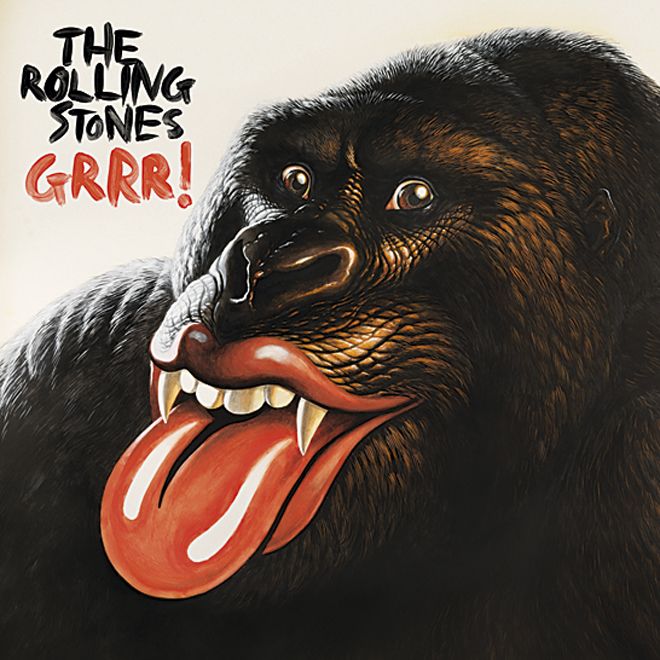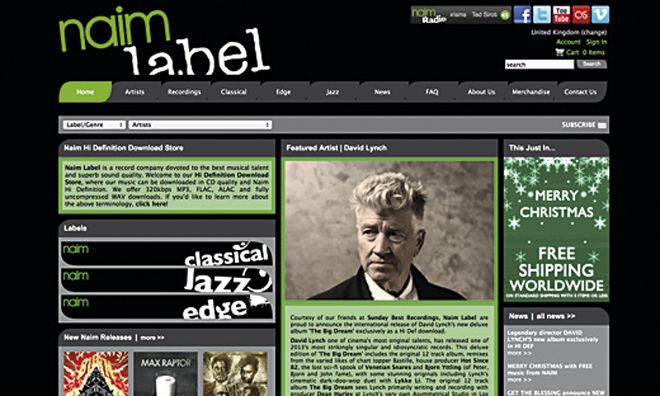Hi-res audio targets take-off

It’s not just video that is getting a resolution update. Audio has also jumped the bandwagon and is now promising an altogether sharper sonic experience. The High-Resolution Audio banner is being unfurled by a growing number of big-name brands, eager to push performance beyond the limitations of the now venerable compact disc.
Of course, audiophiles have been experimenting with high-resolution music files for years now, embracing esoteric codecs and debating the merits of arcane PC chutney such as WASAPI and ASIO. For those with little taste for such convoluted technology, this was one revolution looking unlikely to spin faster than 33.3rpm. Then 4K happened, and the hype driving Ultra HD video miraculously began to provide a new impetus to popularise superior sound.
Sony has been quick to take the lead, fashioning funky new branding for its high-performance hardware and galvanizing software industries for support. Now its rivals have immediately begun road-mapping audio development alongside 4K product plans.
Sound made a bit betterUnlike the last attempt to improve audio technology, which involved Super Audio CD and DVD Audio, this resurgence is not so much a format war, more an ill-defined disagreement.
John Anderson heads up Sony Europe’s AV divisions. He told HCC that high-resolution audio 'works on a number of levels' but is not only about competing codecs and different bitrates. By way of a benchmark, Sony classifies hardware as high-resolution only if it supports a frequency response up to 40kHz. ‘If a product doesn’t make that level we won’t classify it as high-res and we won’t use the badge,’ he reveals. ‘Internally, we’re very strict.’
David Chesky, CEO of HD Tracks, the US high-resolution audio store that should be arriving in the UK shortly, offers a software definition for high-resolution audio: ‘I would describe high-res audio as simply better than 16-bit/44.1kHz CD – it’s 24-bit/48kHz and onwards, up to the roof,’ he confided.
But given that humans can’t hear beyond 20kHz, is there really any reason to get excited? Chesky says the appeal of high-res sonics is not simply a numbers game, it’s about utilising the extra bandwidth to move unwanted artefacts out of the audible spectrum. 'It’s all about the Nyquist Theorem,' he explains. This mandates the relationship between frequency response and bandwidth; to accurately reproduce 20Hz to 20,000Hz (the human hearing range), you need a sampling rate (the number of times per second that the analogue signal is digitised) twice as high, which is why the CD standard was set at 44.1kHz. ‘But then brick-wall filters in the audio band can cause pre- and post-ringing before the music even starts,’ he notes. ‘It totally ruins it. The thing about high-res audio is that we can get these filters way out of the audible band, so you don’t have these problems. Music sounds more organic.

'When you hear a cello live, your ear knows it’s live,' continues Chesky. 'Why? Because there are no artificial artefacts!’ You can tell it’s live even when you don’t hear it direct, he stresses. ‘The eye is fooled at 24fps, but we need really great signal processing to recreate the sound of that cello. A CD or MP3 won’t represent the same harmonic and tone.’
So where does the quest for better-than-CD sound actually lead us? Well, in most cases it’ll be to studio master-grade recordings captured at 24-bit, encoded in FLAC (Free Lossless Audio Codec) or ALAC. Such files offer greater detail and clarity than regular MP3 and AAC, and occupy around half the space of a WAV or AIFF file. They’ll also play on most audiophile-facing hardware.
However, also creating quite a buzz for itself at the moment is DSD. Originally developed for Super Audio CD, DSD is a premium alternative but can prove a challenge to use. DSD downloads can’t be conveniently streamed across a network from a NAS and typically require a PC or laptop to be connected directly to the playback electronics. Also known as DSD64, the standard uses a 1-bit/2.8224MHz sampling process able to achieve 120dB within the 20Hz-20kHz band, thanks to clever noise shaping. There’s also a variation on the format, known as DSD128, which increases resolution by doubling the sampling rate, albeit creating files sizes commensurately larger. Swedish label Opus3 is one specialist outfit to offer such downloads. There’s even a professional DSD editing iteration, known as Digital eXtreme Definition, but really pursuing this for common usage is little more than a sign of madness.
Ultimately, for many users intent on building streaming-based entertainment systems, such complexity significantly reduces the appeal of DSD. For most, focusing on high-resolution FLAC probably makes the most sense.
 High-resolution hardware
High-resolution hardware
While only Sony has gone so far as to create an eye-catching badge for its hardware, there’s no real shortage of kit able to play high-resolution audio. Many media players unspool the files, although some are limited to sample rates of up to 96kHz (one reason some high-res downloads are available in both 96kHz and 192kHz versions), and even fewer have audiophile pretensions.
A growing number of AV receivers will playback high-res audio across a network and from a USB device. Alternatively, you can opt for a standalone network player, such as the £400 Pioneer N-50. Conversely, Sony’s £2,000 HAP-Z1ES hard drive player utilises a 1TB drive and prefers to sync its contents with a networked PC rather than stream. Sony also offers the matching TA-A1ES integrated stereo amp, again priced at £2,000. But high-res audio isn’t just about big ticket items, as the £800 HAP-S1 all-in-one 500GB music system demonstrates. ‘The whole object of this is to expand high-res audio out into accessible price points,’ says Sony’s John Anderson. ‘It’s the only way to get more people willing to invest in the concept.’
When it comes to high-calibre streaming, Linn Products routinely sets the pace. The Scottish brand recently released the mind-bogglingly sophisticated £50,000 Klimax Exakt digital active speaker system, exalted as the purest delivery of studio master files available, and has been flying the high-quality download flag since its first Linn DS streamer was launched in 2007. Managing director Gilad Tiefenbrun told HCC: ‘Our philosophy is source first, to ensure absolute accuracy of recorded data.’ Linn’s Klimax DS was the first audio system able to play back 24-bit native files in the home. ‘The majority of files now being downloaded from the Linn Records store are high-resolution studio master quality,’ reveals Tiefenbrun.
One leftfield addition to the high-resolution audio revolution are Blu-ray Pure Audio (aka High Fidelity Pure Audio) discs. Championed by Universal Music, these new platters play on a standard Blu-ray deck but contain only 24-bit audio, up to 192kHz, in compression-free PCM, Dolby TrueHD and DTS-HD Master Audio guises. Conceptually similar to the ill-fated DVD-Audio format, it remains to be seen if this new variant gains traction. At least its compatibility with BD makes it an easy system to trial – and it doesn’t require any additional hardware outlay for cash-strapped cinephiles.
There remain a fair few hurdles before high-res audio finds the audience that Sony and other advocates crave, not least the lack content from the major record labels. All those extra bits are all well and dandy, but if you can’t hum the tunes it’s going to be a difficult sell. Still, as with 4K, the omens are beginning to look good. Your ears could finally be in for the musical upgrade they’ve long deserved.
 Finding the files – where to look for hi-res audio!
Finding the files – where to look for hi-res audio!
Linn Records (Studio Masters)
This pioneering UK indie offers a wide variety of music from rock and folk to classical and jazz in Studio Master FLAC and ALAC grades. While there’s plenty of obscure treats to riffle through, there’s also some better-known artists available at better-than-CD resolution, including Rush, Katy Perry, Kiss, Rod Stewart and The Rolling Stones.
www.linnrecords.com
Naim Label
Treading similar ground to Linn is Naim. The brand’s record label offers downloads in FLAC and ALAC, and uses the term ‘Hi-Def’ to describe its 24-bit releases. Once again, there’s an excellent spread of genres available, but few names you’ll hear in common conversation.
www.naimlabel.com
2L
The very definition of eclectic, multi-award-winning 2L offers an extraordinary collection of Norwegian composers and performers. Its high-resolution recordings are available on physical media (CD, SACD and Pure Audio Blu-ray) well as FLAC downloads in 24-bit/96- or 192kHz.
www.2l.no
Gimell
This classical label, best known for its recordings of a cappella choral group The Tallis Scholars, offers high-res audio in both stereo and surround formats. The former are 24-bit studio recordings varied between 44.1kHz, 48kHz, 176.4kHz and 192kHz while its multichannel releases are available at 44kHz, 49kHz, 88kHz and 98kHz.
www.gimell.com
 |
Home Cinema Choice #351 is on sale now, featuring: Samsung S95D flagship OLED TV; Ascendo loudspeakers; Pioneer VSA-LX805 AV receiver; UST projector roundup; 2024’s summer movies; Conan 4K; and more
|























































